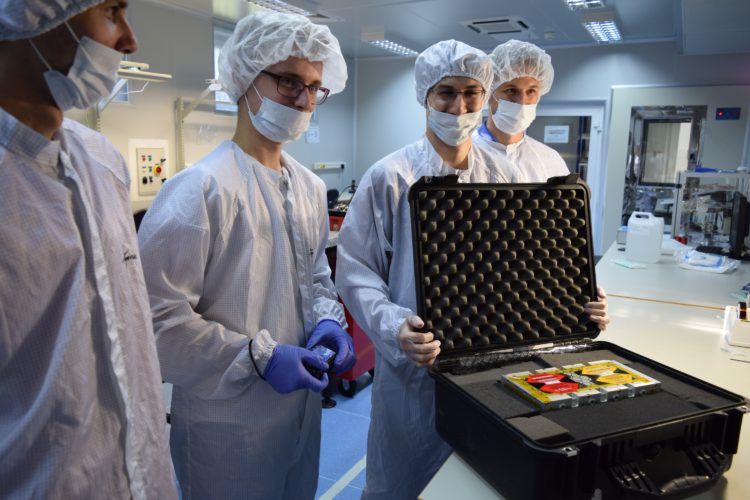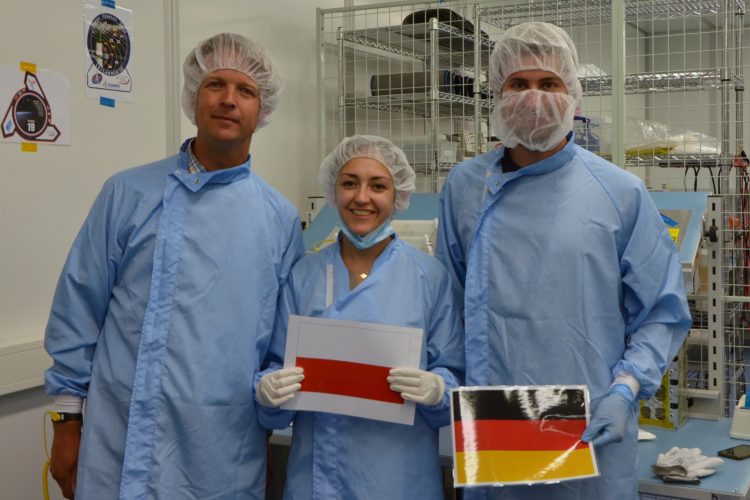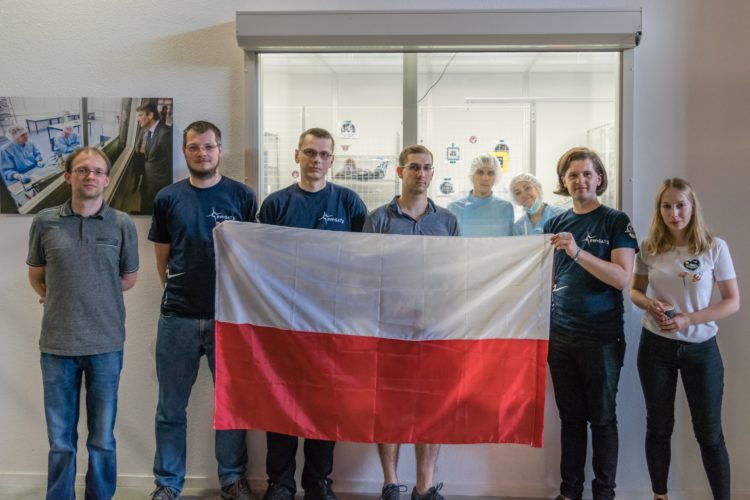PW-Sat2 left Poland
In May 2018, integration, testing and preparation for the launch of PW-Sat2, a satellite built by members of the Astronautic Student Research Group, came to full completion. After that, the satellite waited in a cleanroom for the next big step: integration with a QuadPack, i.e. the container which would house the satellite during the rocket launch. The successful integration with the QuadPack took place on 26 July 2018 at the offices of Innovative Space Logistics in Delft, the Netherlands. The QuadPack will be transferred to the United States and placed in XSpace’s Falcon 9 rocket this fall.
PW-Sat is a CubeSat satellite built by students of the Warsaw University of Technology and the main goal of its upcoming mission is to test an innovative Deorbitation System which takes the form of a large sail. That retractable system will help reduce the satellite lifetime in the orbit from over fifteen years down to a dozen or so months. This is a very important invention in the context of the increasingly serious issue of space debris.
Work on the satellite started back in 2013 led by a team of students of the WUT Astronautic Student Research Group which has operated at the Faculty of Power and Aeronautical Engineering since 1996. In 2016, a contract was signed to launch PW-Sat2 into orbit aboard Falcon 9 rocket which is expected to be launched in late fall 2018. At the turn of 2017 and 2018 PW-Sat2 underwent the required pre-launch testing and in spring this year it was ready to go to space.
PW-Sat2 is to be launched aboard Falcon 9 rocket as part of the SSO-A mission from the Vandenberg Base in California. According to the recent updates, more than 70 other satellites, mostly CubeSats, are to be launched into space together with PW-Sat2. The rocket is scheduled to lift off in November 2018 but the date may be subject to change.
Once the rocket reaches orbit, the satellites on board will be gradually released. PW-Sat2 will be pushed second out of the QuadPack it shares with German satellite MOVE-II and then its basic systems will boot. Radio silence will be maintained for the first 30 minutes as essential data from several onboard systems will be collected. After 40 minutes, antennas will unfold and an attempt to spin-stabilize the satellite will start. PW-Sat2’s mission will be 40 days of several experiments.
More than 100 people have contributed to PW-Sat2 project during its lifetime of over 5 years. The recent weeks have seen mainly preparations of the terrestrial station and the dedicated software for amateur radio operators. In partnership with SoftwareMill, we will release an app to track the status of the satellite mission and to upload messages received from orbit yourself. The software developers of Future Processing helped us create software for the onboard computer and an array of tools which support the satellite testing and day-to-day operation and communication; some of them are already available at our GitHub and expect to find more soon! We are also working on the final design documentation that we would like to share with the public, including the code repositories used in our work on the satellite.
WUT students need your help to enable them to send a group of students to California for Falcon 9 launch in October. If you or your company are willing to help make this happen, please do get in touch by writing to kontakt@pw-sat.pl.
Progress on the satellite can be followed online at PW-Sat2, Facebook, Instagram and Twitter. For the official HD photo coverage of the project refer to Flickr.
Source: pw-sat.pl











